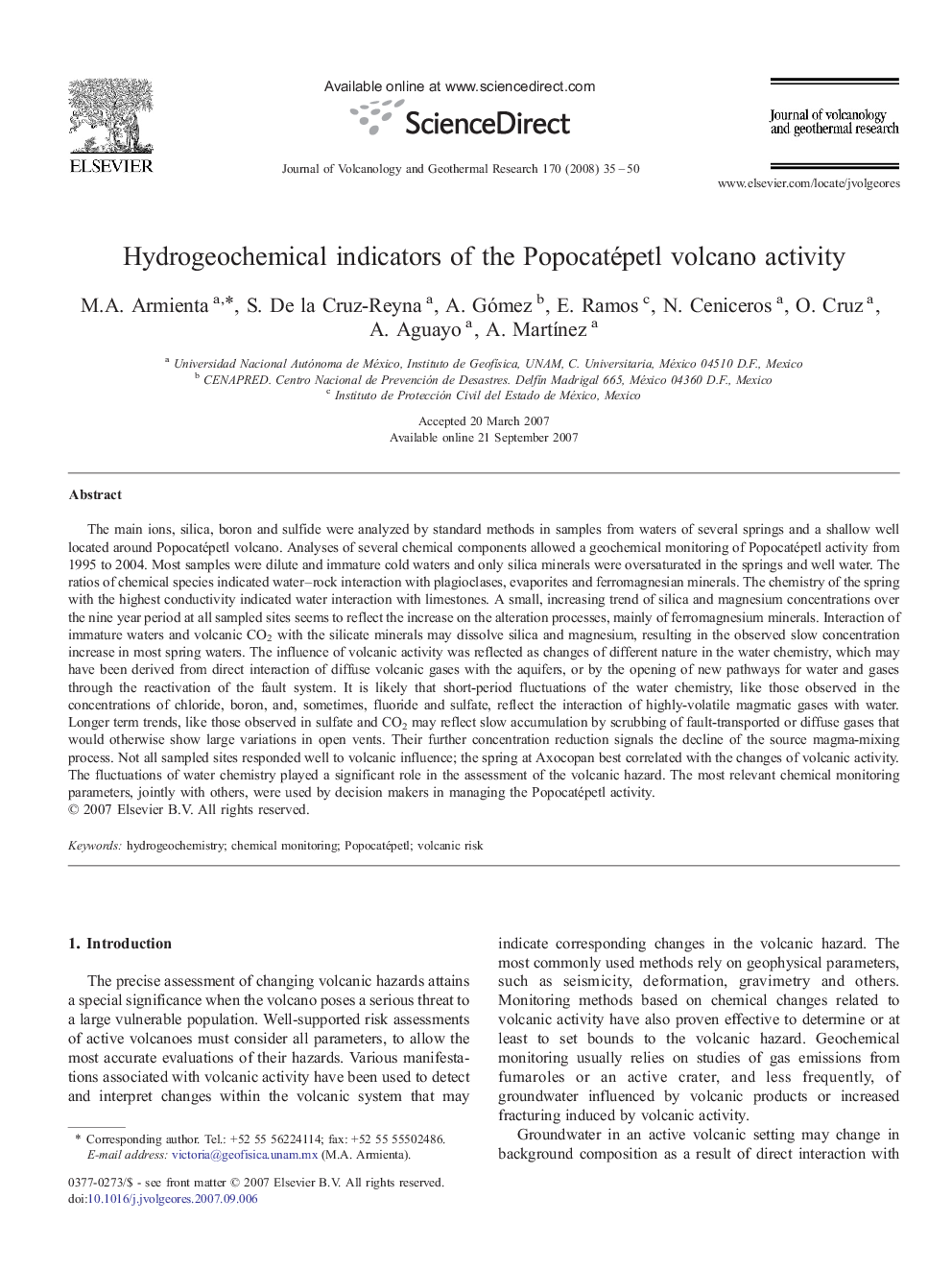| Article ID | Journal | Published Year | Pages | File Type |
|---|---|---|---|---|
| 4713700 | Journal of Volcanology and Geothermal Research | 2008 | 16 Pages |
The main ions, silica, boron and sulfide were analyzed by standard methods in samples from waters of several springs and a shallow well located around Popocatépetl volcano. Analyses of several chemical components allowed a geochemical monitoring of Popocatépetl activity from 1995 to 2004. Most samples were dilute and immature cold waters and only silica minerals were oversaturated in the springs and well water. The ratios of chemical species indicated water–rock interaction with plagioclases, evaporites and ferromagnesian minerals. The chemistry of the spring with the highest conductivity indicated water interaction with limestones. A small, increasing trend of silica and magnesium concentrations over the nine year period at all sampled sites seems to reflect the increase on the alteration processes, mainly of ferromagnesium minerals. Interaction of immature waters and volcanic CO2 with the silicate minerals may dissolve silica and magnesium, resulting in the observed slow concentration increase in most spring waters. The influence of volcanic activity was reflected as changes of different nature in the water chemistry, which may have been derived from direct interaction of diffuse volcanic gases with the aquifers, or by the opening of new pathways for water and gases through the reactivation of the fault system. It is likely that short-period fluctuations of the water chemistry, like those observed in the concentrations of chloride, boron, and, sometimes, fluoride and sulfate, reflect the interaction of highly-volatile magmatic gases with water. Longer term trends, like those observed in sulfate and CO2 may reflect slow accumulation by scrubbing of fault-transported or diffuse gases that would otherwise show large variations in open vents. Their further concentration reduction signals the decline of the source magma-mixing process. Not all sampled sites responded well to volcanic influence; the spring at Axocopan best correlated with the changes of volcanic activity. The fluctuations of water chemistry played a significant role in the assessment of the volcanic hazard. The most relevant chemical monitoring parameters, jointly with others, were used by decision makers in managing the Popocatépetl activity.
